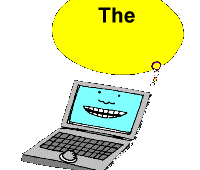| In my case, I came to the classroom with adequate computer
skills, and with a raw understanding of how to integrate technology into the
secondary school classroom. What I did not understand, and what would become the
basis for the Virtual High School project, is how to develop course curricula
that would be placed on the Web for students to use when completing their own
educational careers. Our product would become the basis for coursework that
individual students would access, allowing students who were not
operating from the traditional classroom to achieve academic
success.
Until this time, I had seen technology as a tool that classroom teachers would use to enhance traditional instruction. The Virtual High School would be formed more in the structure of Gene I. Maeroff's Classroom of One. In this new setting, all of the resources that traditional brick-and-mortar based teachers have, on-line students have at their disposal. Students would be acting independently of other students, interacting with their mentors asymmetrically and at times of their own choosing. Mentors and course developers face the challenge of keeping the attention of these techno-savvy students while heightening the level of interaction in order to achieve learning. E-mail, bulletin boards, chat rooms, as well as interactive material built into the course, make up the new toolkit of the on-line educational scene. (Mayeroff, pg 56, 2003) |
|
In our case, our students would be learning outside the regular classroom structure, so they would need all the information self contained in the course material on-line. This self-contained structure is the stuff of what we were learning in the early courses of our program, namely Merging Content Curriculum and Technology (EDCI 797a) and Web-Based Publishing (EDIT 797a). The "background builder" activities must provide the on-line learner with the individual pieces of data they could use to synthesize a new product in the form of "the challenge." Students would need to be pointed to web resources, use their textbook effectively, and know how to use the tools of electronic learning. The mentor would be there to provide feedback on the course content as well-as emotional factors such as self-regulation, time-budgeting, confidence-building, and positive confrontation if the work went undone or was submitted incorrect. (Daloz, pp. 153-154, 1999) |
|
